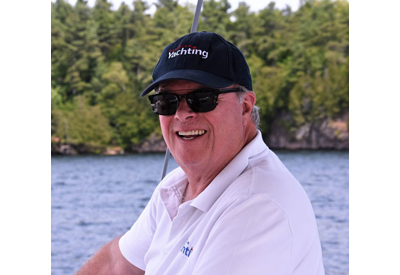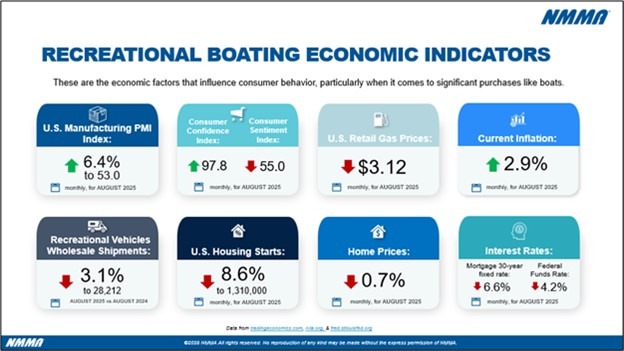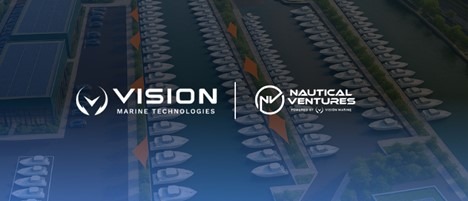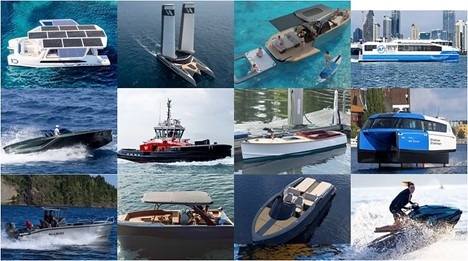Investing in the environment

Oct 11, 2022
Last week in my Editor’s Message I recognized the terrible damage and losses from both Hurricane Fiona here in Canada and Hurricane Ian that hit Florida. Both storms brought a ferocity that had rarely been seen in the past. I closed out the column saying that these extreme weather events certainly give me pause to think about our environment and how we can change our behaviours to slow global warming.
In that same edition of Boating Industry Canada News Week Digest, you might have stopped to read the story “CIB Launches $500 Million Charging and Hydrogen Refuelling Infrastructure Initiative, accelerating new investment in Zero-Emission Vehicle Infrastructure across Canada”. And, if you did, you might have wondered what we were thinking when we included the story. Well…
Many years ago now, I learned a bit about hydrogen as a fuel source where the by-product of combustion would be water vapour. I was fascinated by this and I started following Canada’s hydrogen pioneer, Ballard Power. It was big news at first, but the attention faded and the focus of future vehicle development shifted to electric.
OK, so first, the hydrogen fuel-cell is not combustion – it’s an energy transfer through a fuel-cell membrane. The result is electricity and that can run an electric motor, in much the same way that batteries can. Electric vehicle development is racing ahead but it is based around batteries and the development of new battery technologies that allow faster charging and improved performance. Electric cars and trucks are rolling out as fast as the manufacturers can make them.
I truly believe we will soon see a lot of new electric boats, from personal watercraft to boats in the mid-20-foot range – maybe even larger. However, the mass of the batteries needed to deliver reasonable performance in a boat will be significant.
Power boats need a large and steady thrust to travel at even moderate planing speeds. In contrast, electric vehicles (EVs) can use the high-torque of an electric motor to quickly reach cruising speeds and then the throttle can be backed off to a low level to maintain that speed and discharging the battery slowly. The larger the boat, the more likely it is to need the big steady thrust of diesel engines. But those burn a steady diet of fossil fuel, the same as a big highway transport truck.
Here is where I’m going with this.
Last week’s story read, “On Sept. 28, 2022, The Canada Infrastructure Bank (CIB) announced the launch of its $500 million zero-emission vehicle (ZEV) Charging and Hydrogen Refuelling Infrastructure Initiative (CHRI). The goals of the initiative are to reduce transportation sector greenhouse gas emissions by accelerating the private sector’s rollout of large-scale ZEV chargers and hydrogen refuelling stations, spur the market for private investment and support economic opportunities.
The availability of public charging and refuelling infrastructure is a recognized barrier to ZEV adoption across Canada. As of August 2022, there were approximately 22,000 public chargers and six hydrogen refuelling stations installed in Canada, which is significantly less than the forecasted needs to support ZEV adoption.”
At present, there is no significant volume source of hydrogen available. The most common way to produce hydrogen is by burning natural gas, so that’s plainly a green-house gas, carbon problem again. But Canada has significant hydroelectric generating capacity that could produce hydrogen in vast quantities without burning carbon fuels like natural gas. Also, hydrogen can be safely transported in high-pressure tanks.
To drive a load of cargo across Canada in an electric transport truck would require a huge load of batteries and those would require very long charging times, so electric trucks are not looking like a practical solution, but hydrogen fuel-cell electric power could be quite viable. Refueling times are similar to filling up with diesel.
The press release we ran last week came to my inbox from “out of the blue” but the project seems to have government backing. If such a zero-emission vehicle Charging and Hydrogen Refuelling Infrastructure Initiative (CHRI) were to go nation-wide, even just on our one east-west Trans-Canada Highway, I bet that the trucking industry could be incentivized to invest in fuel-cell trucks.
Actually, a small number of hydrogen fuel-cell vehicles are currently on the road in California. It’s not a dream.
Here’s the possible pay-off for our industry; fuel-cell electric yachts. We could have big power at a steady output, with no exhaust.
Maybe I’m a dreamer but the environmental issues we are facing, are changing our lives fast.
One source of background for this column was this online story by Car & Driver magazine: https://www.caranddriver.com/features/a41103863/hydrogen-cars-fcev/ .
Andy Adams – Editor




























